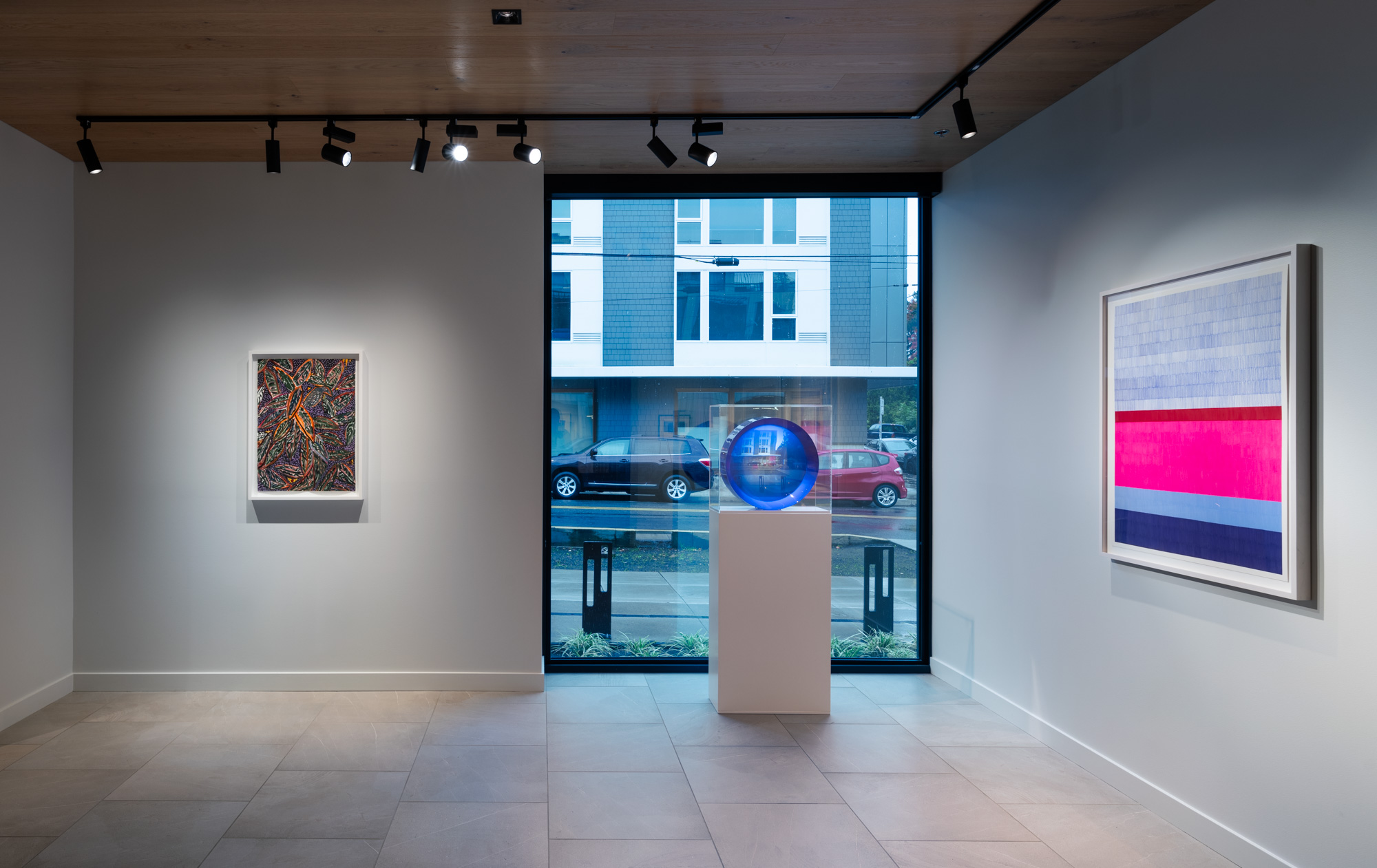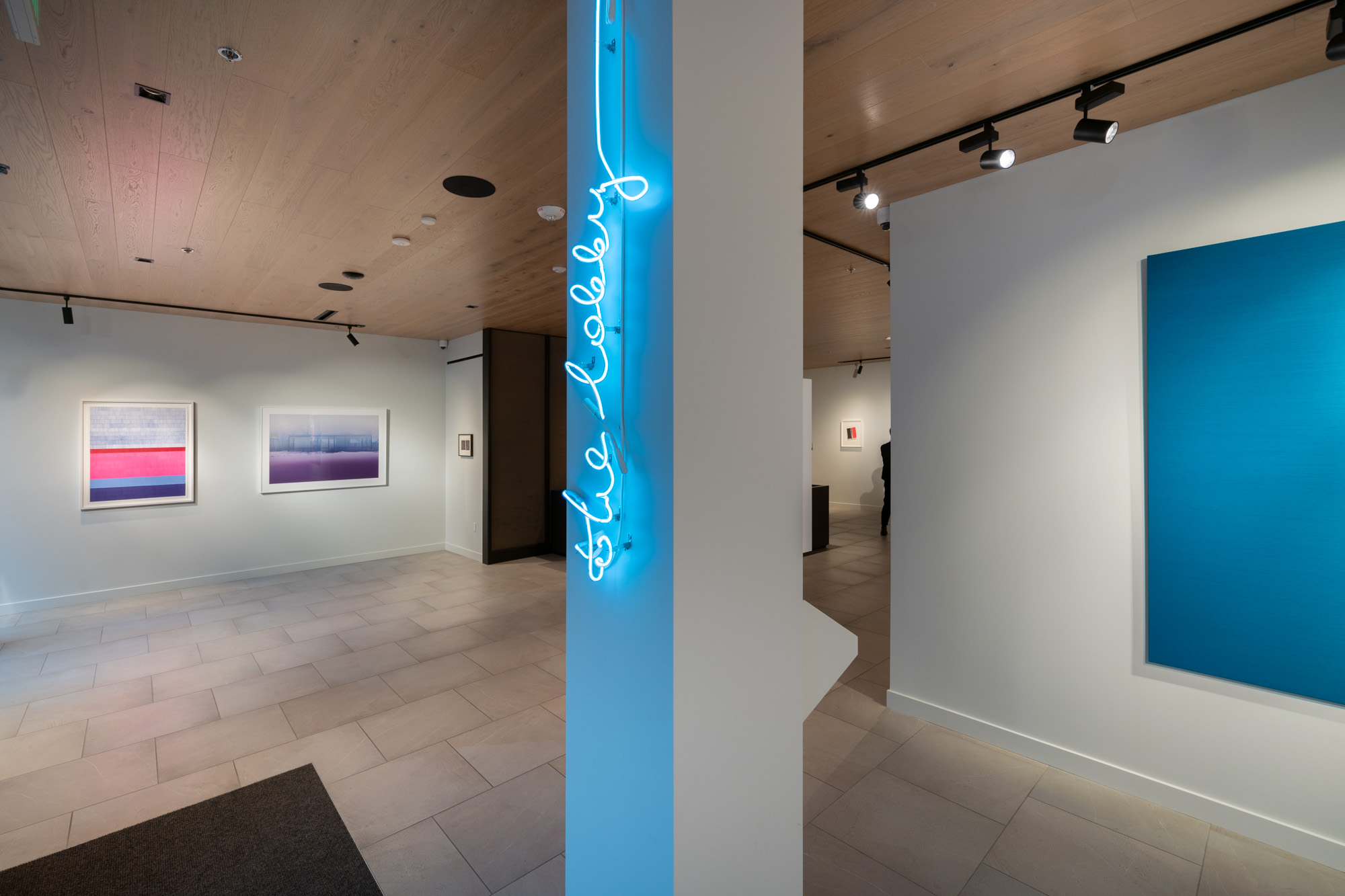Shriek of Color
Opening October 25th, 2023 6-8PM
In an entry dated “Nice, 22 January 1892,” Edvard Munch chronicled a profound moment from his life. He recounted an evening when he strolled along a path, and at a particular juncture, he paused to behold the fjord. The sun was setting, painting the clouds a vivid shade of crimson. In that moment, Munch felt an intense, primal scream reverberating through the natural world; it was as if he could hear the very essence of the scream. He translated this experience into his artwork, capturing the clouds as if they were drenched in actual blood, their color echoing the intensity of the scream. This masterpiece would become known as “The Scream.”
Here, in the preface of our current exhibition, “Shriek of Color,” we explore the power of color as a means to set context and become a tangible element of the narrative. The age-old question of whether form or color takes precedence in an artist’s work elicits complex responses. The choice of color can evoke distinct impressions, moods, content, and even environments. In “Shriek of Color,” the artists wield color for precisely these reasons. The results are at times abstract, at other times representational, and frequently, color assumes a life of its own, serving as a compelling character in the narrative.
For instance, in Matthew Wong’s work on paper, a bird emerges from a tapestry of purple leaves. The bird remains veiled by a symphony of colors until one’s gaze sharpens to reveal its form. Conversely, in a small work on paper by Chris Ofili, individuals within the artwork collectively form a captivating bloom, a veritable “shriek” of color that enhances the image. In the salon-style hang, a piece from the 1970s by Sam Gilliam relies solely on color to create the image, where, as in all his works, color begets abstraction, which in turn births a narrative.
Another luminary featured in the exhibition, renowned for his innovation in color and abstraction, is Ed Clark. He allows color to dictate form, crafting narratives from expanses of color—akin to the approach of Zippora Fried. Fried’s work, however, confines and constrains color, juxtaposing stacked lines to generate various vibrations, dependent on color arrangements, patterns, and their interplay.
Alex Olson, with masterful command of the painterly medium, presents a divided canvas that uses color to accentuate the chasm between what the eye perceives and what the mind comprehends. One half of the painting explodes with chaotic colors, visual brushstrokes colliding, while the other half remains an island of serene, monochromatic stillness. These contrasting surfaces evoke different emotions, yet the evenly divided composition jolts the viewer with a pure streak of color, disrupting thought.
James Welling contributes a photographic work to the exhibition, showcasing the versatility of the medium. Welling, a pioneering photographer, employs abstraction to infuse his style with personal flair, influencing a new generation of photographers. He demonstrates how photography, often typecast as a medium for illustrating narratives, can employ color to become an integral element of the narrative. In his renowned series featuring The Glass House, designed by Phillip Johnson, Welling deploys different colors to transform the perception of the house and offer viewers diverse narratives.
Joan Snyder, known for her loose depictions of objects and bold, gestural strokes within a gridded framework, often imbues her paintings with visceral physicality. In “Come Spring,” featured in the exhibition, the objects, though clearly flowers, transcend fixed forms as the colors bleed into the viewer’s space, suggesting rather than defining.
The exhibition’s pièce de résistance is a monumental painting by Hayal Pozanti. A self-proclaimed daydreamer, Pozanti has devised a unique visual language to explore profound themes like nature, our place in the world, and love. She abandoned acrylics in favor of oil sticks, directly manipulating color on canvas with her fingers, forsaking the traditional artist’s palette. This hands-on approach allows her to engage intimately with color, shaping soft, undulating forms that collide and coalesce, creating an environment that feels both natural and otherworldly.
Perhaps the most straightforward use of color in the exhibition is exemplified by the work of Fred Eversley. Since the 1970s, Eversley has been renowned for his mastery of color encased within resin, capturing and preserving it in a timeless, contained form where the color itself becomes the art.










